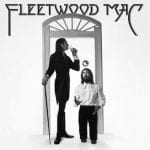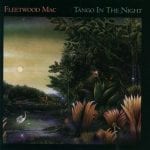A Fresh Look at One of the Rock Era’s Most Underrated Records
Though Tusk received generally positive reviews when it appeared in 1979, the prevailing view seems to be that it paled alongside its huge-selling immediate predecessors, 1975’s Fleetwood Mac and 1977’s Rumours. The consensus was that Lindsey Buckingham had taken over the group and buried its shimmering pop under layers of less-accessible experimental music.
Fleetwood Mac’s label was reportedly not happy and, on Tusk’s atypical “The Ledge,” a New York Times essayist recently wrote, “you can practically hear the record executives shrieking in the background.” Critics did a bit of shrieking as well. All Music Guide proclaimed that Buckingham “subverts pop-rock” on the double LP, which is “as weird as mainstream pop can get.” Rolling Stone, meanwhile, opined that “the bulk of Tusk sounds cold and fussy next to the emotional heat of Rumours” and that the title tune is Fleetwood Mac’s “Revolution 9,” a reference to John Lennon’s abstruse electronic track on the Beatles’ “White Album.”
Comments like these help to qualify Tusk as one of the most underrated records in rock history. In fact, while Fleetwood Mac and Rumours were terrific, the well-sequenced tracks on Tusk are more complex and adventurous, have aged at least as well, and are arguably just as accessible. Though it sold fewer copies than those earlier LPs, the album did after all attract four million buyers, spend 37 weeks on the charts (where it reached number four), and spawn two hit singles. As for “emotional heat,” you can’t get much hotter than Tusk’s “Sara” and “Storms,” both from Stevie Nicks, or Buckingham’s beat-crazy title cut, a gripping portrait of jealousy and paranoia that has garnered a whole lot more airplay than “Revolution 9” ever did.
While Buckingham provided nine of the 20 tracks, moreover, his songwriting contributions to Tusk are outnumbered by the combined efforts of Christine McVie (six songs) and Stevie Nicks (five); and their lilting, addictive melodies and magnificent vocals are just as inviting as anything on the earlier albums. In fact, most of their songs here would fit right in on Rumours, as would Buckingham’s “Not That Funny” and several of his other tunes.
Now, 36 years after its release, Tusk has received the reissue it deserves. One can only hope it will also prompt an equally deserved reassessment. The album may be somewhat less of a sequel to its predecessors than a departure, but Buckingham’s inventive songs and production mark him as a latter-day Brian Wilson, while Nicks and Christine McVie sing like angels throughout. John McVie’s bass adds immeasurably to the mix, as does Mick Fleetwood’s drumming, which sounds like what you’d hear from Ringo if he were a little more manic.
If you want an example of a reissue done right, at any rate, look no further than Tusk‘s new “deluxe edition,” which includes five CDs, an audio DVD, and two vinyl LPs. The LPs and one of the CDs offer a 2015 remaster of the original album. Another CD features singles, outtakes, and session work from the Tusk sessions, and still another delivers what’s labeled as “The Alternate Tusk,” with outtakes of each track presented in the same order as the numbers on the original record. Two more CDs preserve 21 previously unreleased performances from the concert tour that followed Tusk’s release, while the DVD contains a surround-sound mix and an audiophile stereo version of the original album.
Supplementing all this material is an oversized, well-illustrated 24-page booklet that includes a lengthy essay about the making of the record and the real-life romantic entanglements that fueled it. Also in the booklet are the aforementioned New York Times essay; comments on each track by members of the group; and complete lyrics, track listings, and credits.
Budget-conscious fans might be tempted to eschew this everything-but-the-kitchen-sink package in favor of a more modestly priced three-CD “expanded edition,” which includes only the remastered original album and the two discs with singles, outtakes, and alternate versions. My advice: this is not the place to economize. With a few exceptions, the singles, outtakes, and alternate versions are not particularly revelatory; the most compelling goodies here are the high-energy two-disc tour document and the DVD audio disc. The former incorporates many of the songs from the album at hand (including a knockout version of “Sara”), plus fine readings of classics from Fleetwood Mac and Rumours, including “Say You Love Me,” “Rhiannon,” “You Make Loving Fun,” “Landslide,” and “Go Your Own Way.”
As for the DVD, it makes Tusk sound far better than it does in stereo. You’ll appreciate things you may never have heard clearly before, such as the Beatlesque instrumentation that underlies “What Makes You Think You’re the One” and the smooth-as-silk harmony vocals that enhance Stevie Nicks’s performance on “Storms.” If you’re a fan of the band, this DVD may actually offer sufficient reason to buy not only the “deluxe edition” of Tusk but a 5.1 audio system as well.
Jeff Burger edited Leonard Cohen on Leonard Cohen: Interviews and Encounters and Springsteen on Springsteen: Interviews, Speeches, and Encounters, both published by Chicago Review Press. His third book for the same publisher will be available in fall 2016. His website, byjeffburger.com, contains more than four decades’ worth of music reviews and commentary.




